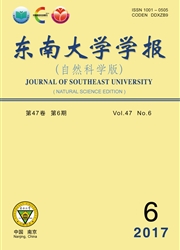

 中文摘要:
中文摘要:
首先对广义分布式天线系统的复合信道模型,如瑞利对数正态衰落信道模型,进行了分析.通过与传统多输入多输出系统的比较,对广义分布式天线系统容量进行了分析,并得出广义分布式天线系统历经容量完整的解析表达式是不可能存在的.为了有效地对广义分布式天线系统历经容量的性能进行评估,利用多元统计理论和矩阵不等式理论推导了在瑞利对数正态衰落信道模型及在发射端采用等功率分配方案下广义分布式天线系统历经容量的解析下界和解析上界.最后,通过数值仿真证明了系统的历经容量可以很好地用其解析界来表述.
 英文摘要:
英文摘要:
The composite channel models of the generalized distributed antenna system (GDAS) such as Rayleigh-lognormal fading are studied. Then comparisons are performed between the GDAS and the traditional multiple-input multiple-output (MIMO) system to analyze the ergodic capacity of the GDAS and make conclusions that it is impossible to achieve an analytical expression for the ergodic capacity of the GDAS. Moreover, in order to evaluate the performance of the ergodic capacity of the GDAS conveniently, the analytical lower bound and upper bound of the ergodic capacity of the GDAS are derived by using the results from multivariate statistics and matrix inequalities, under the scenarios of Rayleigh-lognormal fading and equal power allocation scheme at transmitter. Finally, the analytical bounds are verified by comparisons with the numerical results.
 同期刊论文项目
同期刊论文项目
 同项目期刊论文
同项目期刊论文
 期刊信息
期刊信息
